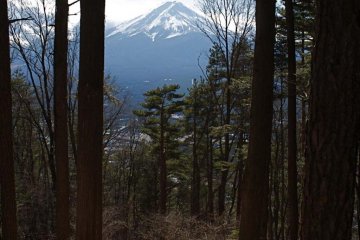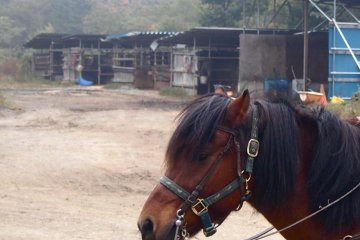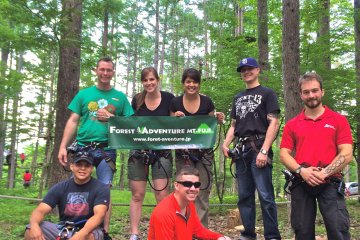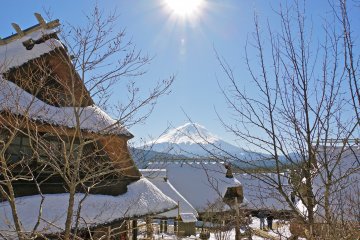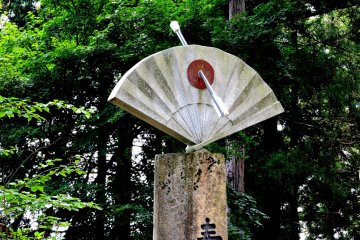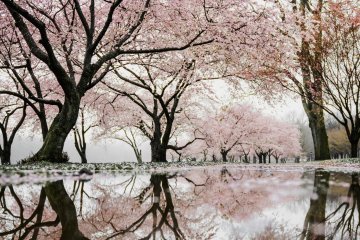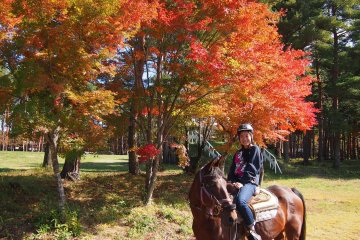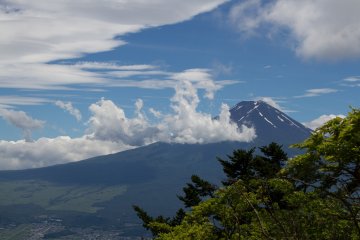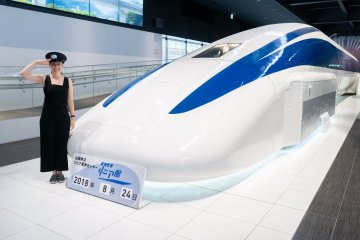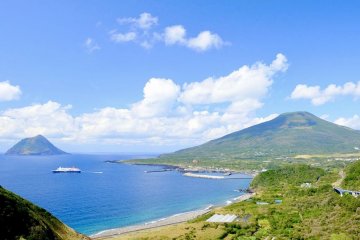I clasp onto my hot can of green tea from a vending machine on the empty train platform, huddling on the bench to stay warm, and looking out at the entrance to the station.
‘Lauren-san … Lauren-san?’ a man calls out to me as he ambles up to the platform uncertainly. He’s dressed in boots, a winter jacket and faded cap. This is Urushizawa-san, the man I’d been expecting, and who would be taking me to the nearby Kiso horse ranch.
As I climb into the waiting 4x4, complete with equestrian kit and stray strands of straw, I notice the time: it’s already 12:30. I was supposed to arrive at 11.00 but had shamefully misjudged the trains, and arrived over an hour late: a faux pas in any country, let alone Japan. I had tentatively called the ranch, with my somewhat limited Japanese ability, and asked to rearrange the horseback riding to later in the day. Luckily for me they were unfazed by my lack of punctuality. “Daijoubu” they said, ‘no problem’. So here I am with Urushizawa, speeding towards the ranch.
The ranch’s name is Koyodai Kiso Horse Ranch. Kiso is a small breed of horse, which is popular in Japan. So much so that many Japanese ranches, including this one, specialize in the breed.
Urushizawa-san drives through the countryside of Kawaguchi, until turning down a dirt track taking us to the ranch. After a long hot summer, this is the first day of the cold weather and the drop in temperature feels even greater having travelled higher into the mountains. Nevertheless, I feel elated to breathe in the clean mountain air. Originally I’d been attracted to this ranch for its location in Koyodai, the wooded surroundings of Kawaguchi in the foothills of Mt Fuji. On a clear day, Fuji makes her presence known with a majestic view over the forest.
After the horses have been saddled up, they are led to a platform with steps. I climb the steps and settle onto the horse's back: this is certainly an easy way to mount.
We then leave the ranch, along a small country road that leads towards Koyodai’s forest paths, waving, as we go, to a coach-load of jovial retirees taking a scenic lunch stop. As we enter the forest, the path becomes narrower and weaves through the dense woodland, broken occasionally by a clearing soaked in sunlight. The wall of trees and the ground’s thick covering of leaves, surround us in a blanket of stillness and silence. This bridal trail is probably the clearest and best-kept I’ve ever come across. Each time our horses leave any droppings, Urushizawa instinctively dismounts and sweeps them away from the path. My horse meanwhile, is intermittently distracted by the temptation of grazing on the long, dry grass: luckily for me, he responds, not too grudgingly, to a gentle tug on the reigns, then continues trotting along the path at a leisurely pace. We ride slowly, taking in our surroundings and passing a wide clearing that makes way for an impressive vista of Mt Fuji – then we speed up on the wider forest paths for a fun fast canter, the adrenaline warming us in the cool air.
As the hour ride draws to a close, we arrive, trotting alongside one another, back at the stables. In the surrounding paddocks some local riders are in the throes of horseback archery: a traditional sport and cultural pastime in Japan.
Kiso ranch is not set up specifically for foreigners, but is undoubtedly open and welcoming to all visitors. You’ll have ample opportunity to practice your Japanese language skills, but this shouldn’t put off non Japanese speakers. Kiso ranch gives visitors a uniquely Japanese horseback riding experience, with very kind company: made even more special by the glorious backdrop of Mt Fuji.
Visit yourself
The sixty minute extensive forest course is ¥7,500 but other trail options are also available. Courses can be arranged for two or more people.



